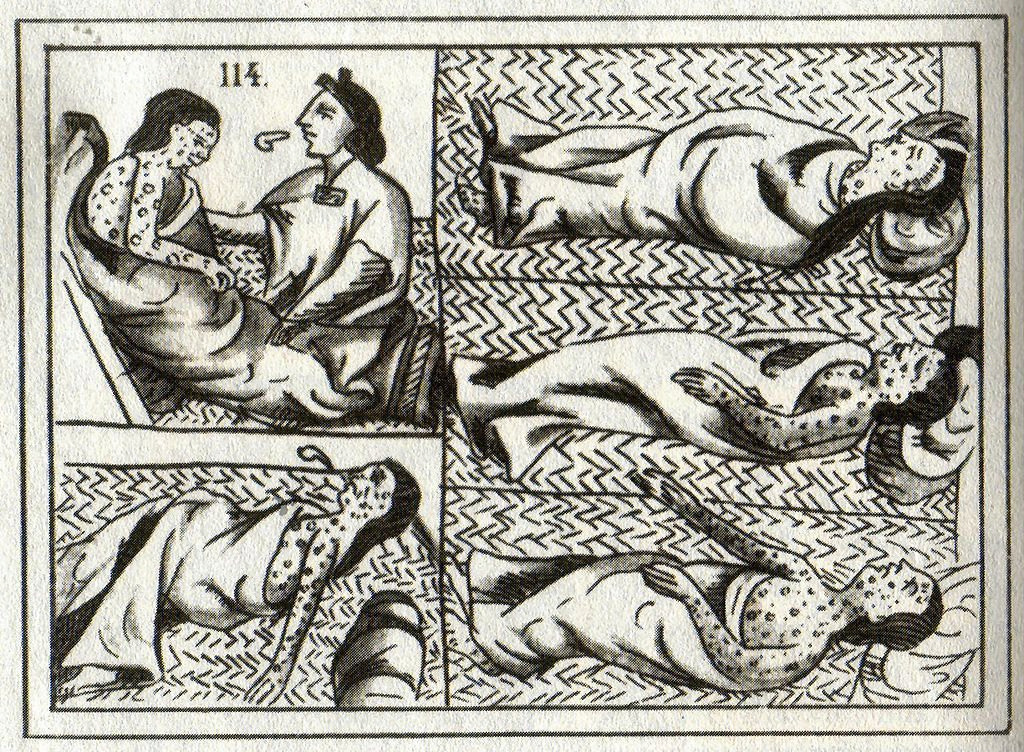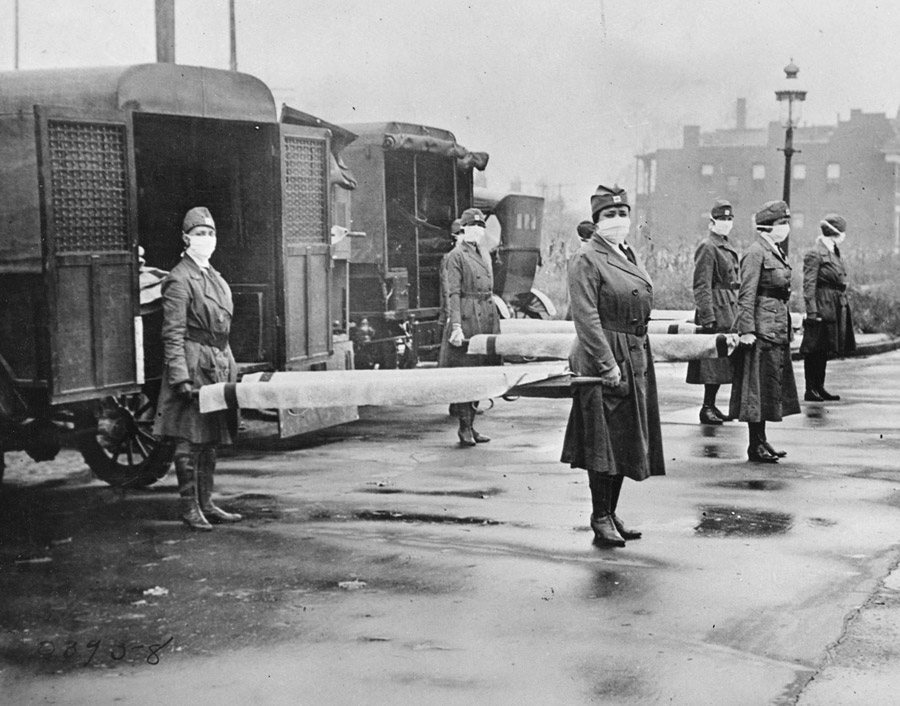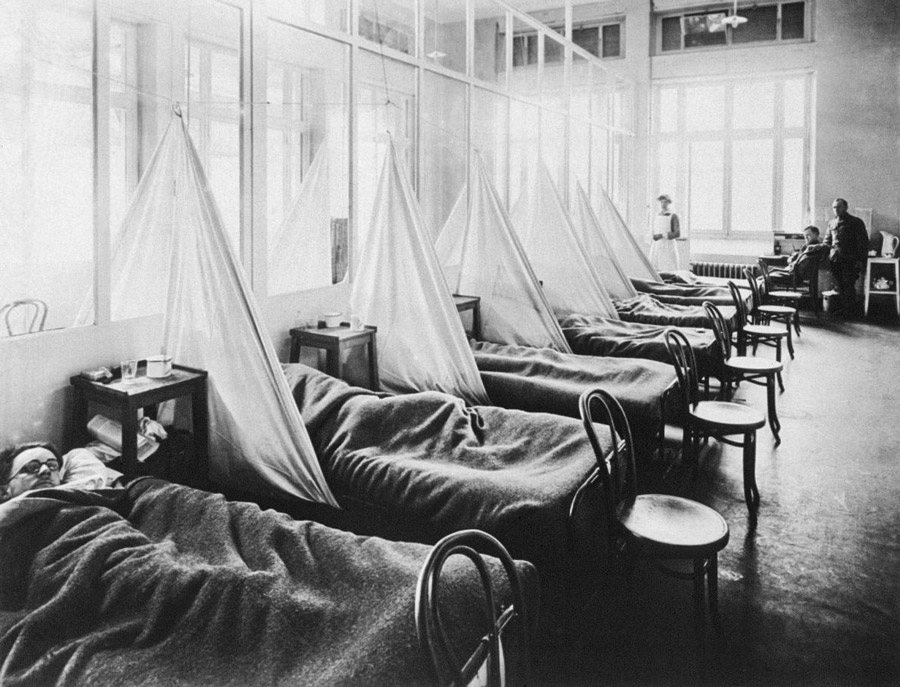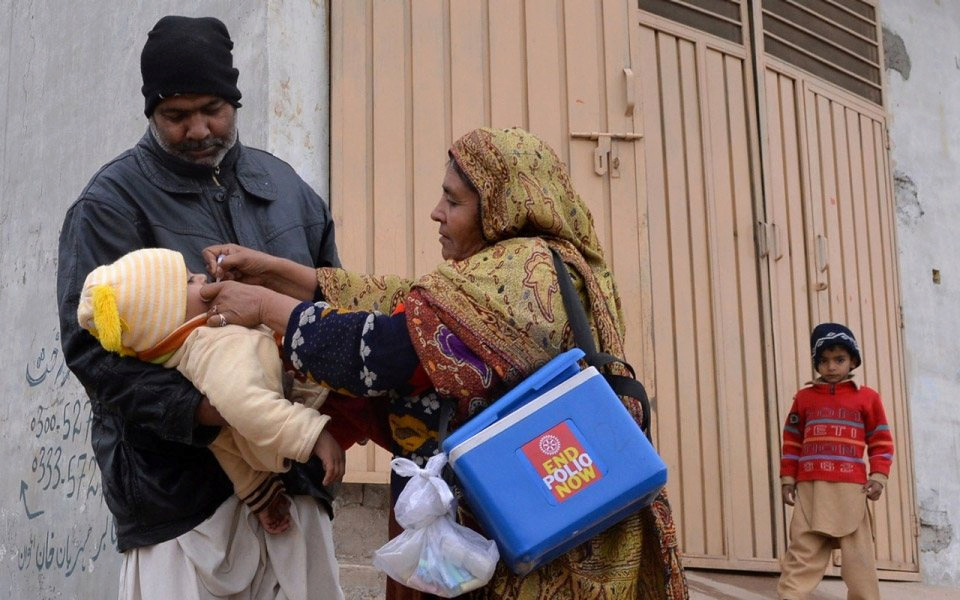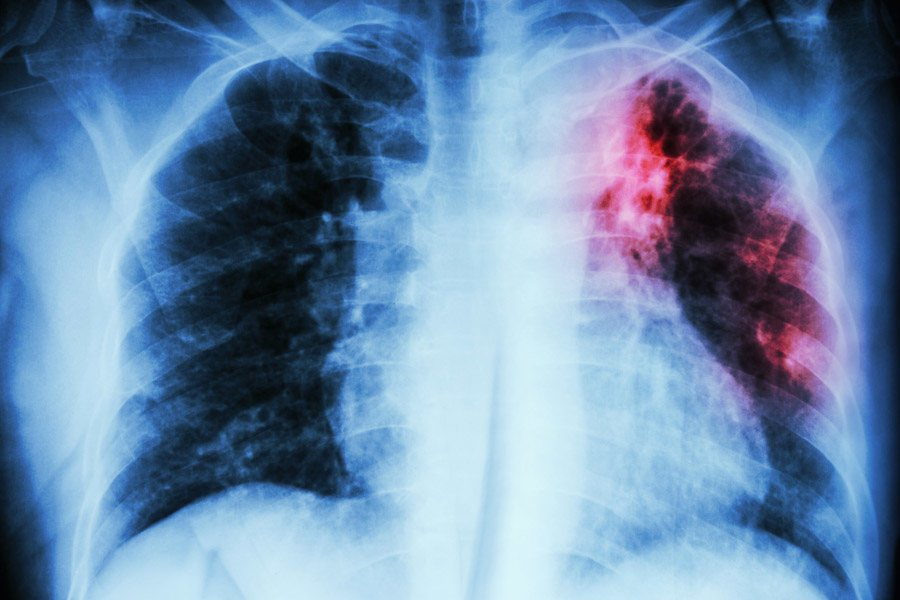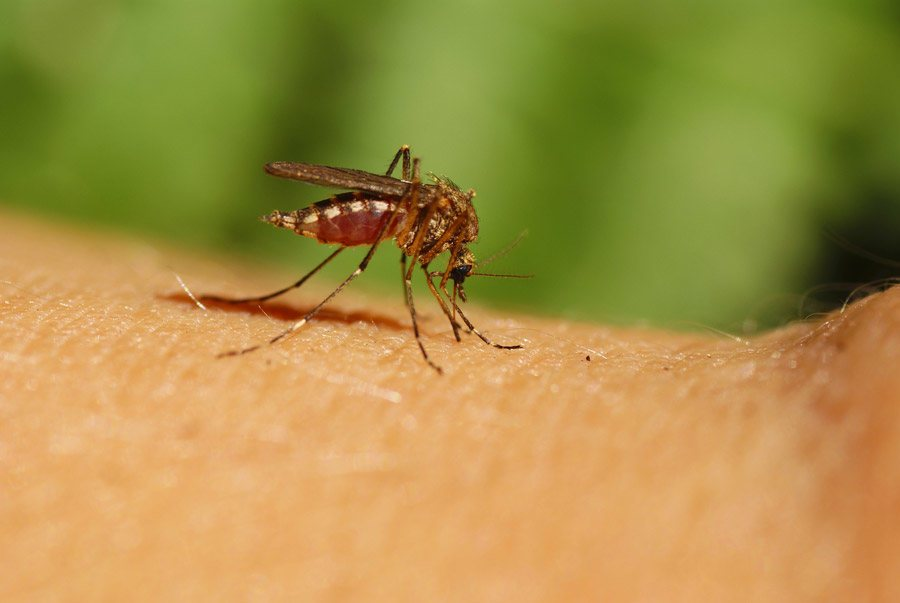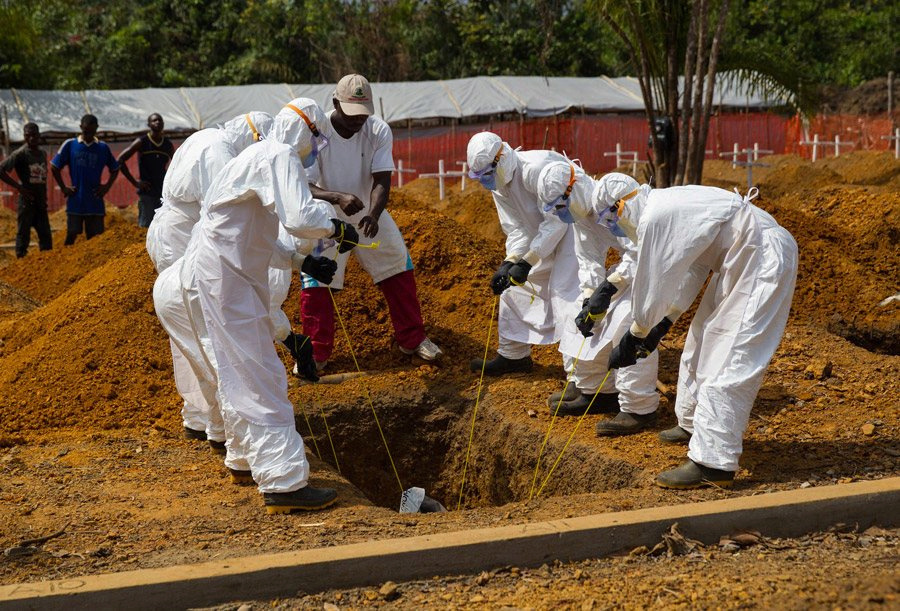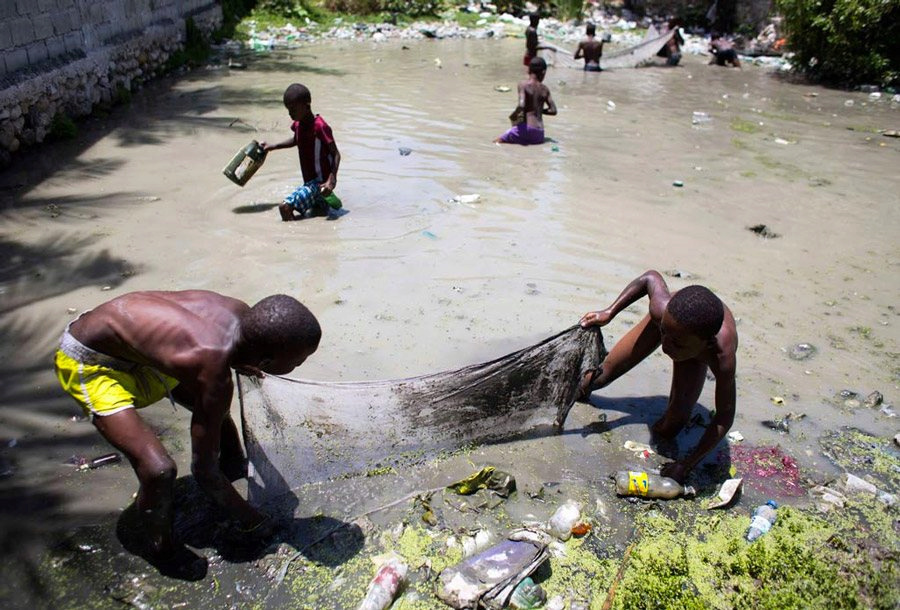10Infectious diseases and epidemics that changed the world forever
When you think of serious illnesses, cancer (or “this disease” according to everyone around me) has the worst reputation of being untreated and unprevented, and everyone can get it.
But unlike the diseases that we will discuss here, cancer is not an epidemic, and dealing with those infected with it will not cause the transmission of infection that leads to infecting others, for example. With regard to epidemics, things are different in terms of the lethal ability to kill and infect, and these capabilities are precisely what make them highly influential factors in human history, and here we will discuss the most important of them:
the plague:
One of the things that still reminds of the plague as one of the worst epidemics in human history are the masks that doctors of the time are believed to have worn.
It is not possible to talk about epidemics and deadly diseases without dealing with the worst epidemic, perhaps in human history: the plague or the “black death” as it was called. Through the third and fourteenth centuries, the disease ravaged the world and spread from East Asia to Europe, passing through everything in between, killing millions in Its path and formation is perhaps the first example of the possible damage to global transportation and communication, as a disease that appears in a town in the far east can spread to entire countries and continents and kill more people than any other natural disaster.
The disease spread with ships coming from China, as the ships were carrying rats, which in turn carried fleas that transmitted the bacterial infection that causes the disease. It is estimated that it killed about a third of the European population during its outbreak, and with 70% of those infected dying from it, the number is not really surprising.
The fact that the plague caused millions of deaths many centuries ago does not mean that it is extinct now, rather it still exists today, but in a very limited way - photo from The Economist/WHO
The symptoms of the disease were not less severe than the speed of its spread in reality, as the matter begins with high fever and continuous sweating, and it gets worse until the appearance of boils of a blue color tending to black in the vulva or under the armpit usually, and if these boils were not opened, they were growing very quickly Toxins accumulate within them until they eventually kill the patient, but even if they are opened, survival is not guaranteed and the possibilities of death are great, just as the disease is transmitted through the air when the boils are opened, and this adds additional and greater infection susceptibility.
According to historians, the spread of the plague led to very big changes in the European continent in particular, as it contributed greatly to the overthrow of the feudal system, as the death that spread everywhere led to a great shortage of labor in the lands, and with the lack of supply and high demand for workers, preference moved from the feudal lords. To workers who can now demand higher wages and better services than before.
In addition to the feudal system, the Catholic Church received a strong blow from the disease, especially with the death of many of its priests and the flight of others from the cities for fear of disease. From subordination, although the main point was indulgences and large taxes, the Church had disappointed her subjects and lost their confidence before her.
Smallpox
When Europeans first arrived in the Americas at the end of the fifteenth century, they brought with them animals entirely new to the Americas such as horses, cows, and chickens, and they also came with improved fighting organizations, armor, and weapons that preceded their indigenous counterparts by centuries.
But the European superiority in terms of weapons was not the only thing they brought with them, as they carried the diseases and epidemics of the ancient world both with them as individuals and among the animals they carried, and although the diseases included influenza, measles and several other diseases, the most deadly was undisputed smallpox.
In the ancient world, crowded life was usual and normal with constant contact with animals that were often kept in barns close to homes and even within cities, and in these special circumstances major epidemics such as smallpox were very common as many people were infected with the notorious disease, Although most of them were dying in the absence of any effective medicines, those who survived the disease had immunity against it and did not contract it again, but this does not prevent the fact that some carry the disease without showing any symptoms of it, but only pass it on to others.
Europeans killed many of the indigenous population, but the main killer was epidemics, especially smallpox, which is extinct today.
Smallpox is caused by two closely related strains of viruses called Variola major and Variola minor, and being a viral disease, the initial symptoms are similar to other viral diseases, as they appear after an incubation period of about 12 days, after which it causes high fever, muscle and back pain, and headache, but the most severe symptoms begin to appear later. With abscesses within the mouth and pharynx and the spread of small and dense blisters over the entire body, and after this stage, either the person dies, as is the case for 30% of the infected, or survives the disease, but the blisters do not go away and cause deformities and problems such as blindness in some cases to last for life.
The importance of smallpox in human history comes from two main axes. On the one hand, it is one of the most important factors in the ability of Europeans to colonize the Americas. Epidemics, among which smallpox was, killed an estimated 90% of the indigenous population and left the rest in a state of extreme weakness after surviving these diseases. Despite European superiority in arms and organization, the matter would have been very different had it not been for the spread of epidemics in the ancient world.
On the other hand, it comes from the fact that it carried one of the most important medical achievements in the world. In 1980, smallpox became the first disease to be completely eradicated due to vaccines (although the spread of anti-vaccine movements may contribute to its return again).
Spanish flu:
During its outbreak, the Spanish flu is estimated to have killed 50 to 100 million people - Photo: Universal History Archive/Getty Images
Between 2009 and 2010, most of the world news was preoccupied with a “new” disease called swine flu. This disease spread very quickly, as did the various types of influenza, and although its global deaths were only about 17,000 cases, it caused great fear and anxiety in the medical community for a simple reason: that It was not the first time that the virus known as H1N1 appeared, but it had appeared about a century before it and at that time caused huge numbers of deaths, according to some estimates, up to 100 million deaths on a global scale.
Most people today know the basic details of the Second World War that spanned between 1939 and 1945, but the World War that preceded it remains forgotten for many people for a simple reason, while the Second World War witnessed great changes in the areas controlled by the warring parties, the First World War was Trench warfare in the first place, and the borders of engagement in it remained fixed most of the time, although this matter did not prevent deaths from reaching up to 20 million victims among civilians and soldiers, but the main killer here was not bullets, but diseases, especially the Spanish flu, which is believed to have been decided as a result of the war .
The year 1918 witnessed the first known epidemiological case of the famous H1N1 virus today, and although some of its strains infect humans all the time, the strain that spread at the beginning of the twentieth century was distinguished from others by being faster spreading and more deadly.
The disease spread globally and killed millions around the world, but it gained its association with Spain from being the country most affected by it, as it spread exceptionally there, and even the Spanish King Alfonso VIII was infected with it for a period of time.
Soldiers in World War I were the group most at risk of contracting and dying from the Spanish flu - Photo: CORBIS
The fact that the Spanish flu occurred a full century ago today, the information about it is not completely accurate, especially in terms of death rates, but what is clear at the time was that the disease kills people in the youth period more than others, as its effect is related to the strong immune system of young people, unlike the elderly who were Their death rates are strangely low.
The death from the disease was like most deaths caused by influenza: pneumonia, but unlike the current situation where pneumonia kills about 4 million people annually, deaths ranged between 50 and 100 million, according to recent estimates.
The characteristic of the Spanish flu was that it works differently from most other epidemics, although it killed millions around the world, the matter happened very quickly and through several outbreaks of the disease only, and the disease quickly disappeared as quickly as it appeared, unlike other diseases that were continuing to spread And killing for centuries sometimes.
The most important effect may have been on the outcome of World War I. Soldiers in the trenches were more susceptible to disease than others due to poor hygiene conditions and lack of nutrition. According to estimates today, records indicate that more American soldiers died from the Spanish flu than those killed on the front lines.
Polio:
In the 1940s, the “iron lung” provided hope for life to many polio sufferers, even though the paralysis caused by the disease is not reversible.
For most young people born in the 1990s and beyond, polio is nothing more than a disease they were vaccinated against in their childhood and may not have seen anyone infected with it in their entire lives, but this disease - which still exists today - was much more deadly during the twentieth century, especially And that it is very successful in coexisting with the host, and in most cases the person is infected with the disease without realizing that he is already sick because of the complete absence of symptoms, but for the few cases where the symptoms are present, the matter was taking a very dark turn.
During the first half of the last century, the disease was very widespread and killed thousands every year in various places, and although the “iron lung” machines were invented in the forties to preserve the lives of those who showed symptoms of the disease and were unable to breathe, its fame and the fact that it dyed the image of that era did not mean It was really widespread, and most people were either unable to afford it or lived too far away to reach it in the first place.
Anti-vaccine fatwas by the Taliban are a major factor in the survival of the disease even today in Pakistan and Afghanistan.
The polio vaccine did not appear for the first time until 1955, and it was followed by a very cheap oral vaccine (it costs about $0.1 per dose, or $0.3 per child) in 1961. However, vaccination campaigns faced many problems in reaching third world countries. Hard-to-reach places on the one hand, Closed political regimes delayed the arrival of vaccines and ended the disease in its epidemic form for several decades in many countries, and even after more than half a century of the invention of the oral vaccine for the disease, there are still cases recorded annually in Africa and a number of infections in both Pakistan and Afghanistan.
Governments around the world have made concerted efforts to vaccinate their citizens in the sixty-four years since Jonas Salk developed the first polio vaccine. Currently, only four countries are still fighting polio.
In addition to the bad history of iron lung machines (some of which are still working today) and the great suffering of those infected with the disease, perhaps the most important thing related to the disease today is the role of anti-vaccine movements. Rumors emerged after the terrorist attacks of September 11 and the American invasion of Afghanistan, where it was rumored that the vaccine was just a conspiracy by the Americans to reduce the fertility of Muslim men, and soon fatwas were issued by the Taliban prohibiting the vaccine.
Syphilis (syphilis):
The second stage of syphilis includes the spread of rashes and sores in the body of the infected person, and if the disease is not treated, it ends up with neurological damage, including dementia and blindness.
The acquired immunodeficiency virus caused by the famous HIV virus may be the most famous of the sexually transmitted diseases today, but it is certainly not the first or the most widespread, and although it has the worst reputation today among sexual diseases, for a long time this reputation was associated with syphilis (or syphilis). Which spread many centuries ago without a known and specific source, and it constituted a nightmare for many because of its bad symptoms on the one hand, and the fact that it may lead to death on the other hand.
Syphilis disease works through 4 stages in those infected with it, it begins with a simple ulcer at the site of infection that appears after 3 to 90 days of sexual intercourse and contact with infected sores with a sexual partner, then the disease moves to a skin rash that covers most areas of the body with swollen lymph glands, and returns To disappear in the third stage, which deceives many patients that they have got rid of the disease, and finally begins the most dangerous part of the disease that attacks the central nervous system and causes degeneration of the motor nerves in addition to vision loss and dementia.
No one knows the original source of the global spread of the disease in recent centuries, but many theories suggest that it came from the New World, as its spread coincided with the exploration of the Americas and Australia and the possibility that it came from Europeans' contact with the indigenous population and then their return with the disease to the Old World is very possible. .
In any case, the obvious physical symptoms of syphilis in its second stage made it a major scandal for those afflicted with it, especially from the upper classes of society such as Pope Julius II, who was rumored to have suffered from syphilis.
Acquired Immunodeficiency (AIDS):
Until now, there is no treatment that rids people of HIV, but infection is no longer a definitive death sentence today.
There are many serious diseases today, but none of them has a bad reputation and a negative view of those infected with it, such as acquired immunodeficiency disease, although the disease can be transmitted by any operations that include blood transfusions or the use of infected needles or tools. The view that the disease is only sexual and specific to male homosexuals, and it was quickly transformed into a stigma that haunts those infected with it and imposes on them a negative social image that continues to this day.
It is believed that the disease originally reached humans in Africa from their contact with other primates (monkeys or monkeys) at the beginning of the twentieth century and spread from there slowly, but it did not become the focus of attention until the early eighties when it spread among gay men in New York and California, hence it came One of its first names is Gay-Related Immune Deficiency, short for “GRID,” as fear of the disease swept through many countries and became the focus of media attention for a period of time because it was incurable, and at first it was a death sentence.
The Catholic Church's anti-condom stance has played a major role in maintaining HIV as a highly prevalent disease in Africa.
Today, even many years after the onset of the disease, some conservatives still describe HIV as divine punishment for homosexuals, even though it has been shown to affect everyone if there is an appropriate mode of transmission.
In any case, the disease has changed dramatically since its early days, and although it was more like a death sentence two or three decades ago, those diagnosed with HIV (before the onset of immunodeficiency syndrome) can live a normal life while controlling the virus and limiting its spread pharmacologically. Although it is still not completely curable.
Although the disease is known in the United States, the vast majority of people infected with the disease and new infections every year occur in Africa for several factors, the most important reason perhaps is religious commitment and the Vatican's continuous campaigns against the use of condoms (which prevent the spread of the disease), but other reasons such as wars The civility that ravages the continent and the use of rape as a tool within it, in addition to the myths about the fact that sex with virgin girls cures the disease, plays a major role in spreading the disease in the brown continent, where the vast majority of the worshipers do not follow any treatment programs.
Disclaimer: In the Arabic language, it is often confused between carrying the virus and having immunodeficiency syndrome, so it must be remembered that acquired immunodeficiency syndrome is the final stage of infection with the virus and it is possible for the infected person to live for many years while carrying the virus without the condition developing into acquired immunodeficiency syndrome .
Tuberculosis:
Tuberculosis can affect different parts of the human body, but 90% of its cases are concentrated in the lungs.
Tuberculosis is one of the most serious respiratory diseases affecting humans (if it is an active infection) and one of the most common diseases, with historically one of its distinguishing signs being the bloody cough of those who suffer from it.
Although the disease today has become very little mentioned thanks to vaccines on the one hand and the use of sterilization and pasteurization (of milk and its products) on the other hand, a third of people are actually infected with tuberculosis, but the widespread type is the atrophic type that does not show symptoms and can live with it completely without knowing whether the person already infected with it.
Tuberculosis is usually transmitted through the air due to coughing and sneezing, where saliva and mucous materials fly from the patient's mouth to others, but it is able to transmit through fluids, personal items, and direct contact with the patient's tools. They suffer from fever, tremors, and night sweats, in addition to losing weight and appetite.
The disease actually affects any part of the body, but most cases involve the lungs, where chest pain and bloody coughing are added to the symptoms.
One of the main risk factors for the disease is weak immunity, so the rates of infection for people with weak immunity, such as those who underwent organ transplants and take immunosuppressive drugs, or people with acquired immunodeficiency virus, are much higher than others, and despite the availability of several treatments for the disease currently, full recovery is very difficult, and usually What is being treated to control the progression of the disease in the first place, and leaving the disease without treatment exacerbates the matter even more, of course, with the death rate reaching 66% of those who contract the disease and do not receive treatment.
Malaria:
Malaria usually spreads in areas that include swamps where mosquitoes abound, and this explains its spread in Africa and previously in the southern United States.
Mosquitoes are known to be one of the most hated insects because they transmit many diseases, but among the various diseases that are usually transmitted by mosquitoes, none of them compares to malaria in terms of seriousness and the very large speed of transmission.
Currently, malaria is still one of the most dangerous diseases in the world, as there are about 200 million infected people around the world, with a death rate that exceeds half a million deaths every year due to the disease and its complications. As expected, the African continent is the most affected.
Malaria usually comes in several different forms. There are several virus species that cause the disease, some of which cause a mild condition that can be treated with medication without the need for hospitalization, while severe infections that usually result from the P. falciparum virus in particular need hospitals and intensive treatment because of their high risk. Fatal cases range from 10% to 50% in the absence of treatment.
Currently, medicines for malaria are still effective, but the risk factors increase with the disease's resistance to antibiotics due to excessive use of them.
One of the biggest effects caused by malaria to humanity is its strengthening of the transatlantic slave trade. When European colonizers wanted to take advantage of the agricultural lands of the continent, the first option was to enslave the indigenous population, but it did not go well due to the fatal infections of the disease and the fact that it reproduces more in environments Wetland, and this is what led the Europeans to rely on buying slaves from West Africa, since most of them were either immune to the disease, or they were infected with it and survived, which increases their resistance to it in the event of a recurrence of infection.
Ebola:
Dealing with Ebola is done very carefully as it can be transmitted through any of the bodily fluids and cause death in almost half of the cases.
With the exception of acquired immunodeficiency, all other items on this list are ancient diseases that have existed for several centuries and are known to kill people, but the other exception is Ebola, which was discovered in Africa at the end of the seventies, and since that time has caused several waves of panic due to its rapid spread on the one hand. On the other hand, its severe and frightening symptoms and high death rates, even 30 years after its discovery, the disease still causes the same level of fear when infected, and global panic over its great spread in 2014 is an example of that.
Like cholera, Ebola comes in several strains that cause the disease with similar symptoms and varying death rates, reaching up to 90% in the most dangerous strains. Symptoms usually begin two days after infection, and include dryness of the pharynx, muscular pain, vomiting and diarrhea, and in some cases it develops into severe bleeding. Internal and external ends in death in half of the cases, on average.
So far, there is no licensed medicine that can cure patients, but that the treatments come in support of the body to reduce mortality rates in the first place.
The fact that the disease does not have an effective treatment yet is an essential part of the great fear associated with its cases, and although it is still largely confined to Africa, there are several cases that have reached the United States and Europe where it has been contained, as even one infected person can transmit the disease For many other people, the fact that the disease is transmitted by contact and handling of patient objects and through bodily fluids, makes it very spreadable and one of the biggest health challenges facing the world in the twenty-first century.
Cholera
Water contaminated with human waste is the main factor for the spread of cholera and its survival to this day, with 100,000 deaths annually.
If there is a disease that expresses the nineteenth century, it is undoubtedly cholera, which witnessed six wide and epidemic outbreaks during that century, and it transformed from a local disease that was prevalent in India in the first place into a global epidemic that reached all parts of the world several times due to the great development in transportation On the one hand, the poor sanitary conditions in cities, especially the problems resulting from the arrival of human waste to drinking water and irrigation water for crops, where the infection is transmitted very quickly and it is possible that the matter may turn from the absence of any symptoms to the death of the patient within hours in the most severe cases of the disease.
In most cases, cholera is not a very dangerous disease and can be overcome with good nutrition and securing clean water and minerals for patients, but the spread of the disease in poor environments and places that lack proper infrastructure means that it is still a fatal disease until today, and it is estimated that there are about 100,000 deaths. It is caused by the disease every year, with about 4 million new infections concentrated in third world countries, especially in Africa, India and South America, where health and living conditions are still very poor.
The repeated spread of cholera throughout the nineteenth century led to major changes in urban planning. While many cities and towns ignored the sanitation of human excrement and did not regulate drinking water and its cleanliness, it became an absolute necessity with an epidemic like cholera waiting for any opportunity to spread again.
Cholera is currently in its lowest prevalence period since its first epidemic outbreak in 1817, but it is still a real threat and was a key factor in considering access to clean drinking water one of the “human rights” according to the United Nations.
source:Websites





